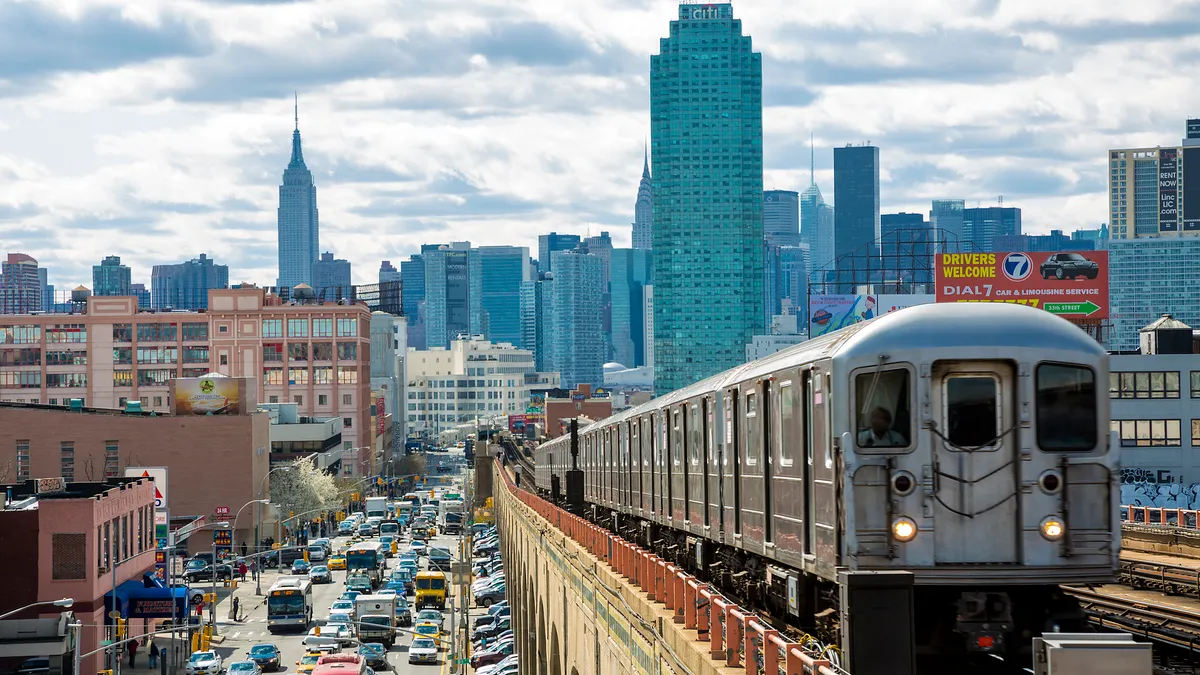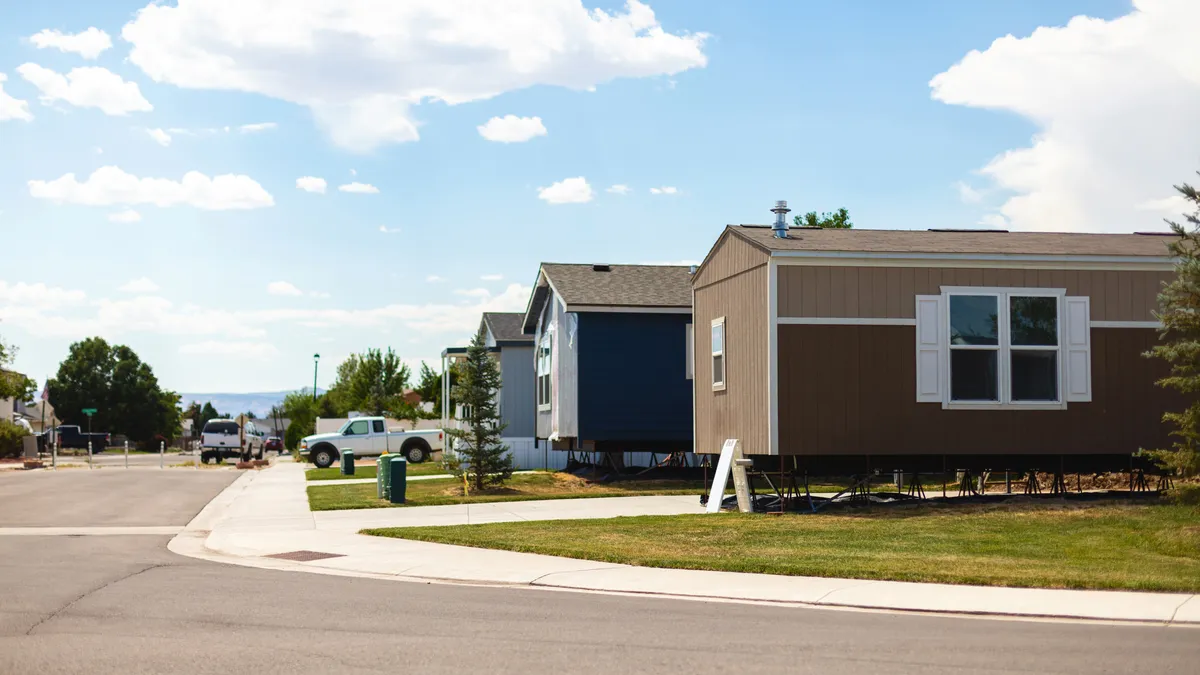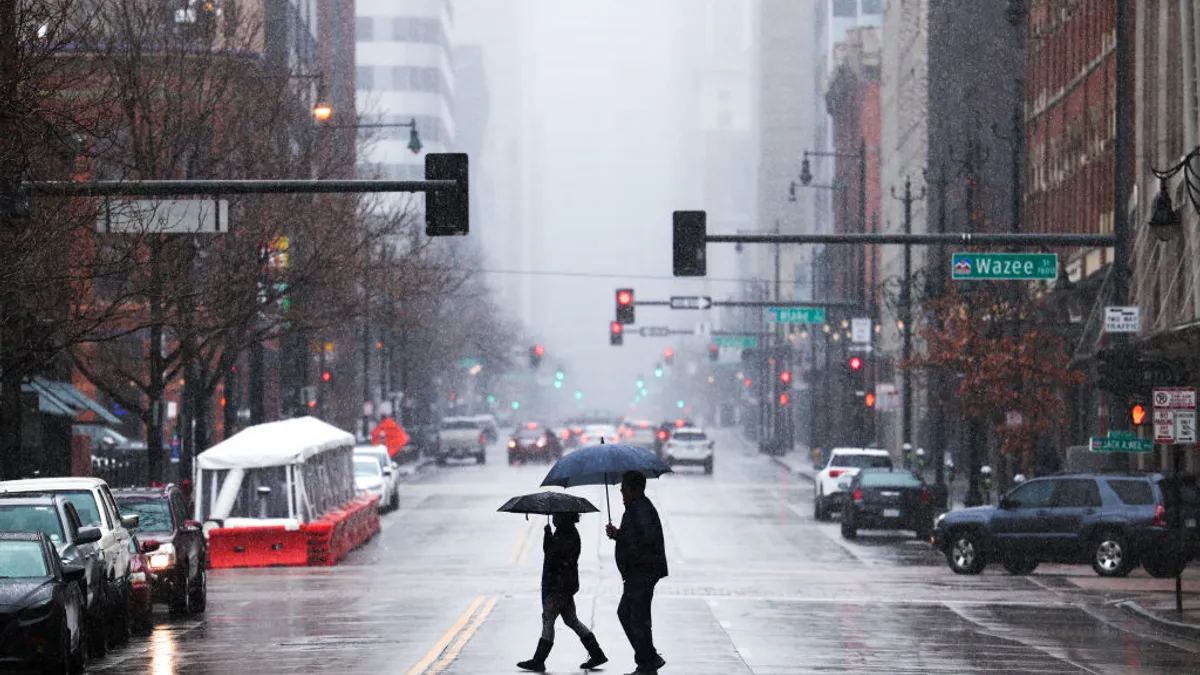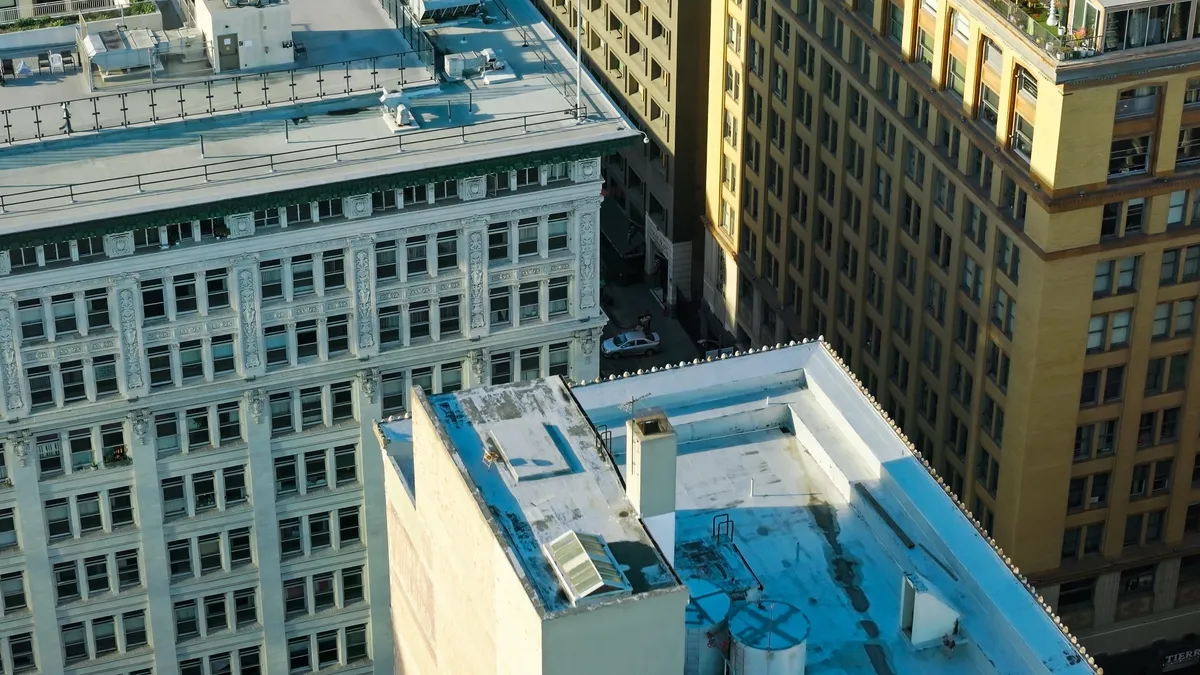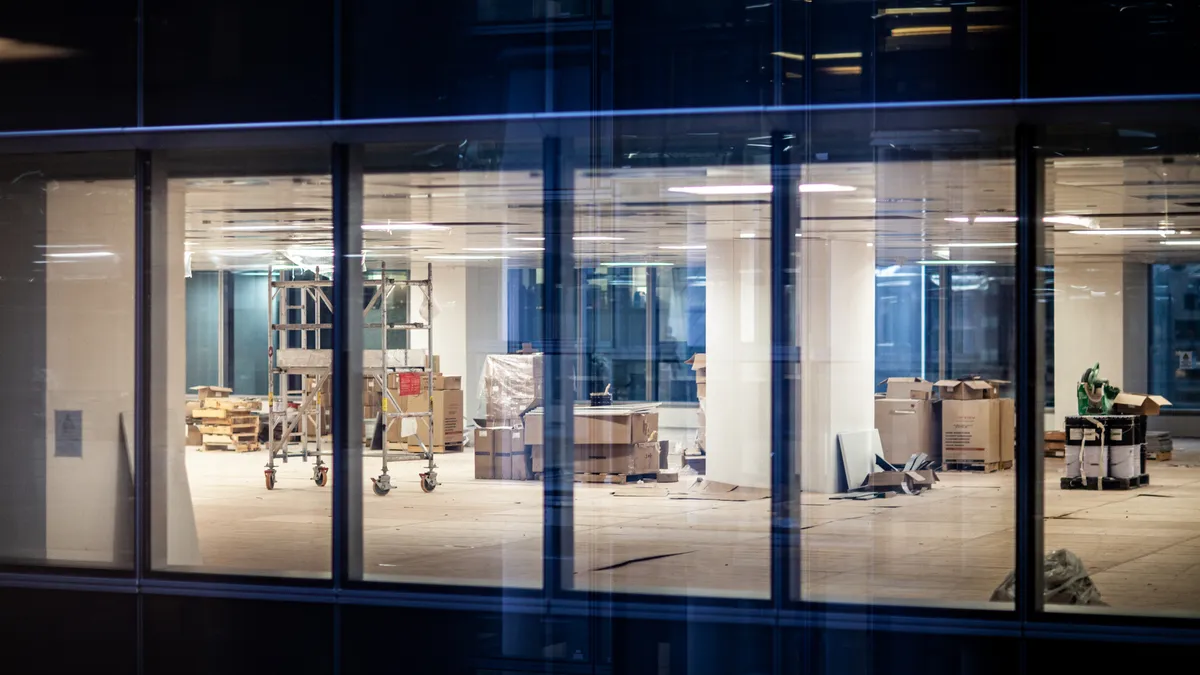Cities are rapidly evolving to keep up with current and future challenges that come with expanding populations — and the private sector is helping them along the way.
During the Smart Cities Connect Conference and Expo in Austin, TX, from June 26 through June 28, representatives from cities, nonprofits, companies and research groups came together to share the newest innovations in smart city technology, from mobility to connectivity to safety.
City managers highlighted the crucial role that businesses play in helping them improve their cities' infrastructure, but private sector executives noted that their own motives are also self-serving. Construction companies, for example, are building the infrastructure that will serve populations for decades to come — and they must have a seat at the table to ensure they are aware of, and influencing, new methods and innovations.
Construction Dive sat down with Elizabeth Heider, chief sustainability officer for Skanska USA, to discuss why construction firms should be involved in the greater dialogue around smart cities, how resilience is key in sustainable design, and why new delivery methods can help all stakeholders provide the best option for local communities.
Editor's note: This interview has been edited and condensed.
Why is Skanska involved with the smart cities conversation?
HEIDER: It’s important for us to know how what we build connects to the larger goal, and what cities and organizations like the U.S. Green Building Council with their LEED for Cities are doing to evaluate how the pieces we build connect with the whole.
We do development and construction and build P3 projects like the LaGuardia [Airport Terminal B] replacement that are in and of themselves like a city — they have all the components of a city. We do a lot of work on college campuses and work for healthcare systems that have pieces that are connected either across campuses or across cities. It’s important for us to know how to connect those things and elevate the life-cycle performance.
Why should construction and development companies care about the growing focus on smart and sustainable cities?
HEIDER: Any development/construction company should be paying attention to not only stand-alone technologies, but also IoT and how they connect. It’s important to make sure you future-proof the infrastructure. We design, operate and maintain projects — so we’ve got to eat our own dog food. We’re in a position to build for tomorrow’s generations buildings that will last 50, 75, 100 years. To look at how technology has changed within my lifetime, anticipating that these buildings will be around double that — we don’t know what we don’t know at this juncture. Developers and builders — especially those that do design-build-operate — need to be engaged in this and need to be on the leading edge and even the bleeding edge, because what is bleeding edge [today] will be antiquated almost tomorrow.
How do you work with cities beyond simply completing projects?
HEIDER: We need to be responsive to the will of the public. We are also the trusted adviser to civil leaders. Even though we’re a builder, we’ve also done a lot of research and worked on teams where we provide the cost and constructability input for research projects. Cities are looking at what the cost, or ROI, would be to go to net-zero energy, net-zero water, and all the way to Living Building Challenge. [We're] partnering with the cities for them to [consider that] if these are the costs, what is the availability of solar, for example. What is the policy we need to put in place to enable that. We’ve worked with Santa Monica (CA) and leaders in Washington, DC, to identify how we could bring together the city's utilities, the city’s governmental leadership, and the private sector to deliver next-generation solutions.
Why is it important for the private sector to be involved early on in the process?
HEIDER: It has to be a dialogue. We don’t want to be going down a dark alley and end up with nothing. The richest conversation comes from not just governmental engagement — which is really important, as they typically control the funding for what we’re building — but from the constituents and stakeholders. For the Expo 2 line in Santa Monica, we had conversations with the neighboring communities about transit other than the rail line. We looked at creating bicycle paths so you could get that last mile of connectivity. We looked at how it interacts with dropoffs. We looked at what was important to those communities and created value all along the line, as opposed to what transit might otherwise do, which is divide communities. We have to remain in touch with [the surrounding community]. Somebody is going to use it, so we want to build the best value thing that will serve that community for the long haul. Because we are also a developer, we’re really thoughtful about value and how we can build the best thing.
We've heard many definitions of a smart city during this conference. How do you define a smart city?
HEIDER: The smart city is a city that anticipates future need in a really elegant way. And elegant means taking a look at the confluence of function, resilience, sustainability, wellness — it’s all of it. Even though 'smart' seems to be synonymous with technology, it certainly goes way beyond the technology. What does it accomplish, and how does it improve the lives of the citizens?
In terms of sustainability, where do you think the world of sustainable construction is headed?
HEIDER: Another dimension that is really important is resilience. How do we make sure the buildings we’re building can withstand more extreme weather events, and how do you draw the line between building a building that’s completely unaffordable because it’s anticipating a total apocalypse, versus recognizing that the past is not prelude anymore? Actuarial data is no longer reliable. One-hundred year floods happen more frequently, and more extreme events are upon us. How can we be really smart about anticipating those events? All of that falls under the umbrella of sustainability — to be resilient, to promote health, to have efficient mechanical and electrical systems — it’s all part of the equation.
Having thoughtful dialogue with clients and being included early on in the process is a really important piece. Especially for larger and complex projects, like LaGuardia, new business models and new procurement models are really important. That’s a P3, where we’re bringing together the development, operation, funding and construction. You have an opportunity to make really thoughtful long-term decisions because you’ll be balancing the lifecycle cost with the initial cost.
You mentioned new business and procurement models. How do those play a role in this smart and sustainable cities conversation?
HEIDER: It's [about the] ability to look at new business models that connect players that aren’t used to being connected in a one-stop shop. Contractors are really good at building. We understand all the risks and benefits and how to deal with our supply chain. In design-build, we bring on designers. You need a great management group to guarantee the energy savings over time in order to pay for the upfront investment. Then there are the folks who identify projects out there, developers or brokers who understand what’s happening. On the individual project site, who is the person managing the asset to make sure that you’re coordinating this work with other improvements that are happening in the project and that the tenants understand?
That’s a whole ecosystem of stuff you’re beginning to put together. What are the contracts looking like, and how do you make sure everybody has a vested interest in the overall outcome? That’s different — we’re used to our silos. IPD in the U.S. usually has to do with delivering a project and handing over the keys. That’s just one piece. [This is more] IPD with a financial and operational overlay.
Is it difficult to convince the industry to make that kind of change?
HEIDER: It’s like asking a bear to ride a bicycle — it’s just not natural. In the construction industry, we’re used to managing risk. If you take on risk that you have the smarts to manage, then there’s a reward where you should be able to get a better return. Architects have pushed away so much risk that they’ve lost a lot of control and prominence in the process. Every player tends to be familiar with risk and either chooses to outsource it or takes it on and expects to be remunerated for it, but we’re still not completely comfortable with coming together as a group and saying, 'We have to share the risk, so how do we move forward?' If you begin to enlarge the group beyond the classic IPD to add in the operator or the developer, usually that’s much more siloed.
Pulling all of these players together to work toward a common goal where there’s shared risk and shared responsibility and shared reward, it’s unnatural. And it requires trust. P3s that are design-build-operate for a longer period of time are forcing us to do that. Right now, those are big projects. On one hand, I’ll be interested to see if it’s possible to scale it down to smaller projects. And on the other hand, I’ll be interested to see if it’s possible to come up with value chains that are really thoughtful and that provide good value to constituents and great reward to the team that’s brave enough to do it at district scale and citywide scale.


